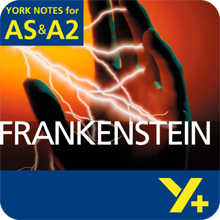Your Assessment
Read through the answer below and decide what grade to give it. Use the Hints & Tips to help you make your assessment.
Describing his dream of harmoniously living with a female companion in a state of nature, the monster in Mary Shelley's "Frankenstein" says to his creator: 'The picture I present to you is peaceful and human' (p. 149). But what does it mean to be human? In order to argue, as some readers have done, that Mary Shelley is presenting the monster as more human than his creator, it is first necessary to define what Shelley means by the term. After all, as Joanna Bourke demonstrates in 'What it Means to be Human' (2011), the meaning of 'human' is by no means self-evident and often changes throughout history.
For Mary Shelley, I would argue, to be human above all involves sympathetic engagement with others, and in this respect she agrees with her father, William Godwin, that the natural human emotions were those of affection, pity, and, above all, benevolence, a public form of sympathy in the eighteenth century. The text begins with the meeting of two characters, Robert Walton and Victor Frankenstein, who lack such virtues and are characterised by egotism and self-interest. Their deficiencies as humans are symbolically shown in the sterile icy wastes of the Arctic where they meet. This is a desolate Gothic space of terrifying 'mountains of ice', an inhuman landscape which comes to represent emotional as well as physical coldness.
This frame narrative sets the context for the very different responses of the creature in his embedded narrative at the very heart of the text. In contrast to Walton and Frankenstein, benevolence, affection and pity are all qualities the creature immediately and apparently instinctively demonstrates, even if he is as yet unable to name the 'sensations of a peculiar and overpowering nature' that he experiences. His instinctual benevolence is shown in his saving the young girl from drowning and in his various attempts to help the De Lacey family, cutting their wood, doing their chores. He longs for companionship, to be accepted with the 'kindness and affection' he observes demonstrated in the De Lacey family. His desire for companionship, and more specifically for a mate, contrasts strikingly with Victor Frankenstein's rejection of family and his evident reluctance to settle what he repeatedly describes, with what we might suspect is a shudder, as his 'union' with Elizabeth. There is little 'affection' implied in this very formal term.
If Shelley is, as I have suggested, equating the human with the qualities of benevolence, pity and sympathy, then we must concede that the creature loses his humanity and does become truly monstrous once he becomes obsessed with revenge. Denied the sympathies for which he longs, the creature, he himself admits, becomes miserable, and misery makes him 'a fiend', destroying what he cannot have. At this moment, allusions to "Paradise Lost" confirm a fall from the human: the monster stops seeing himself in human terms as a new Adam and begins to associate himself rather with the 'fiend' who has 'cast off all feeling'. 'Evil', he adds, quoting Milton's Satan, 'thenceforth became my good'. While nothing excuses the way the creature has been treated, as Anne McWhir reminds us, he does have choices and perhaps does not make the right ones.
It is at this moment too, if we move to a psychological reading of the text, that the creature begins to act as Victor's dark double or doppelgänger. Destroying what he cannot have, the creature acts out Victor's rejection of relationships that bind him to family and community, his rejection of familial and sexual love, all things that might interfere with the pursuit of his own needs and desires. The creature, then, loses his humanity as he merges with, and acts for, his creator.
We can, therefore, see the monster's nature as essentially human but twisted by his misery. Additionally, we can see the monster's humanity eroded by his function as the dark double enacting Victor's own rejection of human sympathies and the obligations they entail. These two readings might, finally, come together to explain one of the more puzzling aspects of the novel's conclusion. This is the moment when Walton finds him hanging over Victor's coffin, full of 'grief and horror' at what he has done.
Walton's response – and we might pause to consider how unreliable his perspective has been throughout – is to dismiss the creature's remorse, his coming 'to whine over the desolation' that he has made. He called the monster a hypocrite. There may, however, be more to it than this, particularly since this looks back quite explicitly to the portrait of Caroline Beaufort, epitome of benevolence, sympathy and pity, painted in an 'agony of despair' over the coffin of her father. It may well be that with Victor's death, the creature's function as dark double is over, giving another reading to his comment that 'He is dead who called me into being'. And it may well be that while driven to monstrous behaviour by the treatment he receives from all, the creature until the very end retains some remnants of sympathy and affection, those qualities which Mary Shelley suggests are the very essence of what makes us human.
